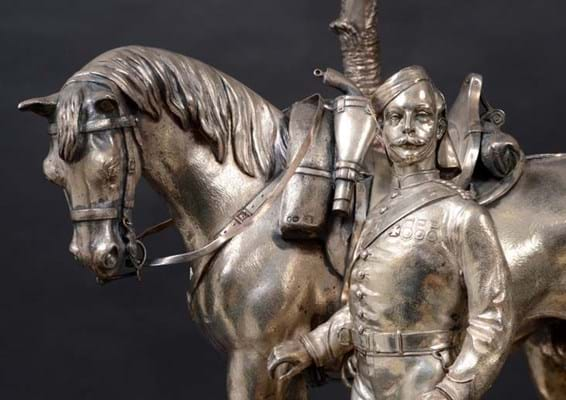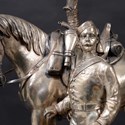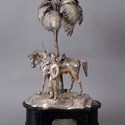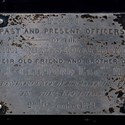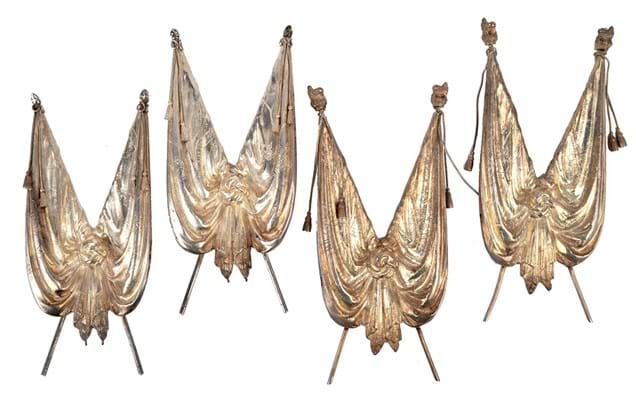They are also highly collectable, with regular, militia and territorial units all having their own individual examples marking such landmarks as past victories, acts of gallantry and sporting achievements.
Some silver would be passed on to successor battalions or regiments, and other pieces ended up in regimental museums, but inevitably items do appear at auction.
While they may be a simple tankard or goblet perhaps, coming up at Somerset saleroom Lawrences on May 17 is an example of the pinnacle of regimental silver design: the classic silver centrepiece. It is estimated at £8000-10,000.
The silver was shown off in the officers’ messes (which appeared at the end of the 18th century) where they ate separately from the soldiers when not in active service, part of displays including the regimental colours, paintings and portraits. Items were often bought by subscription or given by retiring members. In a sense they can be seen as 'family silver', reflecting not just the regimental history but also the pride, honour and esprit de corps of the officers.
The centrepieces in particular were intended to impress, and the one for sale in Crewkerne, standing 2ft 4in (71cm) on its plinth, certainly does. Relating to the 9th Lancers’ Regiment and made in the early 1870s by London silversmith Stephen Smith, it depicts a 9th Lancers officer with lance in hand, standing beside his horse beneath a palm tree.
It is modelled in crisp detail and the officer is as carefully finished as the sword, saddle, reins, pistol and associated patrolling equipment of the period. The group is placed upon rocky ground and, engraved on a plain rock face, is the legend A 9th Lancer Indian Mutiny 1857-58. The oval shaped lower plinth mount is adorned with a 9th Lancers badge which has been taken from the 9th Lancers pouch design.
A plaque reads: From past and present officers of the Ninth Queens Royal Lancers to their old friend and brother officer JJ Clifford esq MD as a reminiscence of his 25 years service in the regiment 2nd December 1871.
The centrepiece has passed by descent in the family of surgeon John James Clifford MD (1821-89), who was born in Ireland and who was attached to the 9th Lancers. He served for many years as their surgeon including during the Indian Mutiny. He was awarded the Indian Mutiny Medal with three bars: Lucknow, Relief of Lucknow and Delhi. These medals are also included in the auction with an estimate of £2000-3000.
“The regiment earned its nickname, The Delhi Spearmen, for their actions in this war,” says Lawrences specialist Jeff Day. “The regiment was renamed the 9th Lancers in 1861 and several Victoria Crosses were awarded to those who served within it throughout various subsequent wars and campaigns.”
Silver variety
A variety of regimental silver can be bought at lower price points. For example, in the November 22 auction held last year at Woolley & Wallis in Salisbury, the silver ornaments with London hallmarks which sold at a low-estimate hammer price of £600.
They were for the 4th Battalion Highland Light Infantry (Royal Lanark Militia), each in the form of regimental colours in stands, with a small pierced bracket to the reverse of each indicating that they may have formed part of a mess table centrepiece.
On January 30 Kent auction house C&T offered a silver dish marked for the North Somerset Yeomanry example with EIIR regimental badge engraved to the centre. On three stylised feet, and weighing 390gms, it had hallmarks to the reverse for London 1897 and was made by Henry Stratford.
It sold for £100 against an estimate of £50-80.


